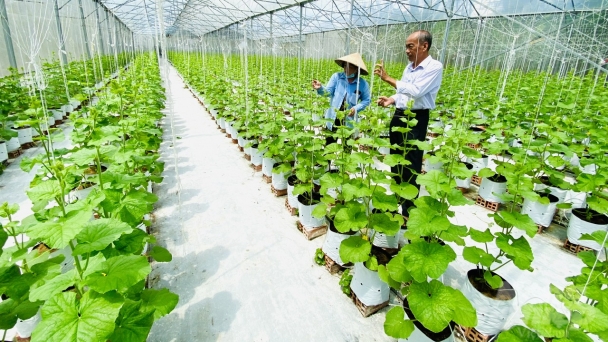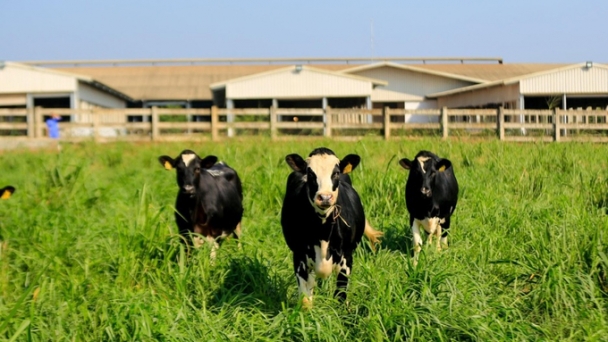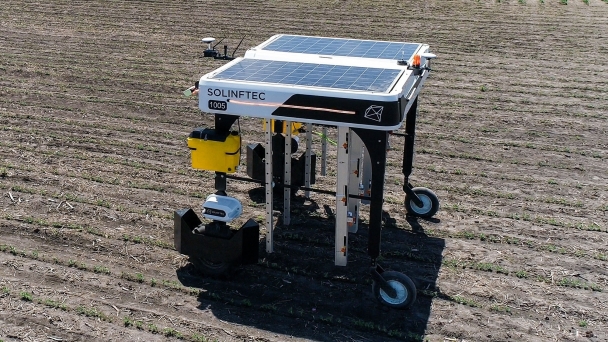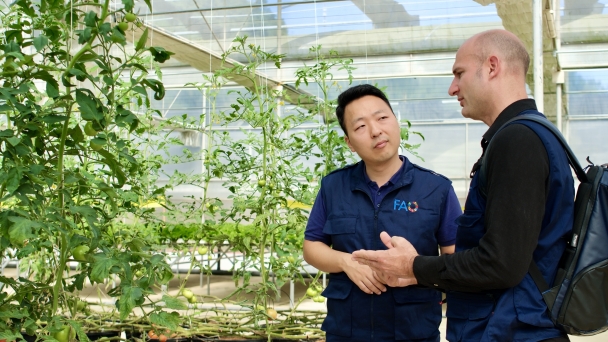December 20, 2024 | 12:50 GMT +7
December 20, 2024 | 12:50 GMT +7
Hotline: 0913.378.918
December 20, 2024 | 12:50 GMT +7
Hotline: 0913.378.918

Perspective of Ho Chi Minh City Fisheries Center. Photo: Thanh Son.
Ho Chi Minh City's role in seafood exports is clearly shown through export figures. According to the Southern Sub-Institute of Fisheries Economics and Planning, Ho Chi Minh City has no advantage in aquaculture and seafood exploitation as it only has 5,076 hectares of brackish water shrimp farming with an output of more than 8,500 tons and 350 fishing vessels. However, each year the city's seafood export turnover reaches US$ 922 million, accounting for about 10% of the country's total seafood export turnover.
Ho Chi Minh City (HCMC) keeps an important position in seafood exports thanks to its developed logistics and processing infrastructure. With its favorable geographical location, HCMC is a gateway for exporting goods through a system of seaports and airports. The city is also a gathering and distributing point for aquatic products from large farming areas of the Mekong Delta, which accounts for more than 70% of the country's seafood output.
At the same time, HCMC is also the focal point for importing seafood raw materials exploited from abroad for export processing, with 4/8 seaports designated to perform this task. In addition, Binh Dien Wholesale Market receives about 1,200 tons of fresh seafood and 5 tons of dried seafood every night, accounting for 70–75% of HCMC's seafood demand, then distributes it through supermarkets and traditional markets.
Although it is an important hub for logistics, processing, and export of seafood, up to now, HCMC has not yet formed a center serving exclusively for the development of the fisheries industry, especially the processing sector and fisheries logistics services. This leads to a lack of infrastructure to retain and attract seafood businesses to invest in the city.
Thus, to develop the fisheries logistics industry in HCMC effectively and sustainably, in addition to solutions on policy, technology, human resources, etc., there need to be specific measures to promote the process of preparing and implementing infrastructure projects.
Mr. Tran Hoai Giang, Director of the Southern Sub-Institute of Fisheries Economics and Planning, emphasized that one of the important solutions is to accelerate the progress of the project on building the City Fisheries Center. This center will play an important role in optimizing activities from collecting, preserving, and processing to transporting and distributing seafood. When the project is implemented, HCMC will have a moderner logistics system, meeting the increasing needs of businesses not only in the city but also in the Southeast and Mekong Delta regions. Thereby contributing to enhancing competitiveness for the fisheries industry of HCMC and the Southern region.
At the Workshop "Ho Chi Minh City Fisheries Center, role of promoting the development of sustainable seafood production chains in the Southeast and Mekong Delta regions," organized by the Ho Chi Minh City Department of Agriculture and Rural Development on December 26, Mr. Nguyen Xuan Hoang, Deputy Director of the Department of Agriculture and Rural Development, said that the city's seafood output is not large. However, seafood, including exploited seafood, brought to the city from the provinces is numerous, and the city's agriculture sector is having to issue certificates of origin for a large amount of seafood caught from the provinces' fishing vessels. Therefore, the formation of the City Fisheries Center also has a very important meaning in removing difficulties in implementing anti-IUU fishing work.
Many Southern coastal provinces are also paying attention to HCMC's Fisheries Center because, when formed, the center will have very high inter-regional connectivity. Mr. Nguyen Van Chien, Deputy Director of the Binh Thuan Department of Agriculture and Rural Development, affirmed that when the City Fisheries Center is formed, the Southern coastal provinces will also benefit.

The Ho Chi Minh City Fisheries Center project is located on the Xoai Rap river. Photo: Thanh Son.
The Ho Chi Minh City Fisheries Center project is located in Binh Khanh commune, Can Gio district. The project has a scale of 100 hectares, including 2 subdivisions: Fishing Port - Fish Market Area (20 hectares) and Seafood Processing and Fisheries Logistics Services Area (80 hectares).
The location of the Ho Chi Minh City Fisheries Center project is convenient for seafood processing businesses to access and transport raw materials from the Southeast and Mekong Delta regions and imported raw materials. At the same time, transport goods to all seaports and airports in the region through road transport and inland waterway systems and logistics centers that are existing and in planning and development plans for logistics, transport, seaport, and aviation infrastructure of the Southeast region and HCMC.
According to the Southern Sub-Institute of Fisheries Economics and Planning, the City Fisheries Center project is currently encountering some main difficulties, especially related to implementation progress and investment capital. Although the site clearance project was completed in 2014, the remaining two component projects are still at the planning stage and have not been approved for construction investment. This may stem from difficulties in the process of perfecting legal procedures and investment mechanisms.
Therefore, investing in the construction of essential infrastructure items for the Fisheries Center project is extremely necessary to maximize the potential for seafood development in HCMC. Only when there is investment can the city strongly participate in the supply chain, becoming a hub for consuming and exporting seafood.
Besides, there are increasingly major changes in traffic planning and economic development orientation of Ho Chi Minh City, the Southeast, and the Mekong Delta in the future. Therefore, reviewing and adjusting the City Fisheries Center's planning is extremely necessary to ensure feasibility and synchronization with new policies and planning, especially Decision No. 582/QDTTg of the Prime Minister on approving the planning of fishing ports and storm shelters for fishing vessels for the 2021–2030 period, with a vision to 2050.
Translated by Thu Huyen

(VAN) According to the development plan for Can Tho in the 2021-2030 period, with a vision for 2045, the city will establish 7 high-tech agricultural zones and 2 concentrated livestock breeding areas.
/2024/12/17/1117-0-nongnghiep-231112.jpg)
(VAN) Spirulina products of a young girl in Da Nang city are currently not only present in many major provinces and cities in the country but also exported.
/2024/12/17/5810-1-194622_403.jpg)
(VAN) From a seemingly worthless waste product, cassava residue in Tay Ninh has become an important source of revenue for starch processing enterprises.

(VAN) The cattle herd at TH organic dairy farm enjoys an antibiotic-free diet of certified organic feed and exposure to sunlight that boosts their physical activity and natural immunity.

(VAN) 2024 has proven to be a year of remarkable innovation and advancement for agriculture, a field that remains crucial in feeding a growing global population while balancing sustainability and efficiency.

(VAN) Experts from the Food and Agriculture Organization of the United Nations (FAO) highly appreciate the progress of households in the project 'Smart agriculture for future generations'.
/2024/12/14/0220-2-115415_267.jpg)
(VAN) 'To enhance the brand value of Vietnamese fruits and vegetables, quality is the No. 1 factor, followed by price,' said Deputy General Director of Doveco Nguyen Thanh Tung.